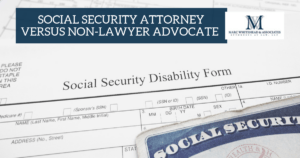Affective disorders, or mood disorders, can be incredibly serious and impact your life in drastic ways, preventing you from getting and keeping a steady job and even regularly engaging in the activities of daily living.
The Social Security Administration understands this, which is why they have made sure to include affective disorders as an official disability that can qualify you for benefits. But in order to get those benefits, you still need to meet the specific medical requirements they have set down, and this means doing one of two things:
- Matching the definition for Affective Disorders in the SSA’s Listings of Impairments.
- Showing that your disability is the equivalent of one of these listings.
Call or text (800) 562-9830 or complete a Free Case Evaluation form
Either way, you have to understand their Listings of Impairments and what it does. This document is a series of disabilities the SSA officially recognizes along with the specific criteria you have to meet in order to qualify for Social Security disability with that affliction. Prove that you meet the criteria, and you will get benefits automatically.
Because it’s a much clearer path to simply prove that your impairment fits their definition, that’s where we’re going to start.
Listing 12.04: How to Meet the Requirements
Affective disorders, as defined by the SSA, typically refer to conditions where the individual swings back and forth between manic elation and severe depression. These mood swings are so prolonged they impact your “whole psychic life.”
In order to show that your condition is severe enough to qualify, you need to meet the criteria in both categories 1 and 2, or in category 3, as described below:
Your condition has been medically documented as ongoing and is one of the following:
- Category 1: Depressive syndrome, defined by at least four of these symptoms:
- Delusions, hallucinations, or paranoia
- Suicidal thoughts
- Trouble thinking or concentrating
- Feeling worthless or guilty
- Lowered energy levels
- Physical and emotional reactions that are slow
- Purposeless physical and emotional reactions (i.e. pacing, biting nails)
- Disturbed sleep
- Weight gain or loss
- Loss of interest in previously engaging activities
- Manic syndrome, defined by at least three of these symptoms
- Delusions, hallucinations, or paranoia
- Involvement in dangerous or painful activities without recognition of this fact
- Easily distractible
- Inflated self-importance
- Thoughts that “fly” from one thing to the next
- Pressured speech
- Hyperactivity
- Bipolar syndrome, defined by having a history of both manic and depressive episodes and currently displaying signs of one or the other
- Category 2: This has caused at least two of the following:
- Difficulty with the activities of daily living
- Trouble with social functions
- Trouble keeping your concentration
- Repeated episodes of personality disturbances
- A chronic affective disorder of 2 years or more that has been medically documented, required you to seek psychosocial support or take medication, limited your ability to work, and included either:
- Multiple episodes of personality disturbances
- A current inability to function without a supportive living arrangement
or
- Personality disturbances that occur if there are even slight changes to your environment or a tiny increase in mental demands
There aren’t really any objective laboratory tests available that the SSA uses to help determine whether or not you have an affective disorder and if it meets their criteria. Instead, you need to provide a meticulously documented medical history of your condition.
For a free legal consultation, call (800) 562-9830
Without the use of specific, objective tests, some people find it difficult to meet the criteria of this listing, but that doesn’t mean you can’t still qualify for benefits. Those who can’t meet the definition simply have to go the alternate route of proving that their condition is the equivalent of a disability in the Listings of Impairments.
A skilled Social Security disability attorney can show you how to do this using the SSA’s Five Step Sequential Evaluation Process. If, in going through the process, you can prove to the SSA that your condition has prevented you from engaging in gainful employment for at least 12 months, you can win the benefits you need and deserve.
Learn even more about the claims process by reading our Social Security Disability eBook for free!




